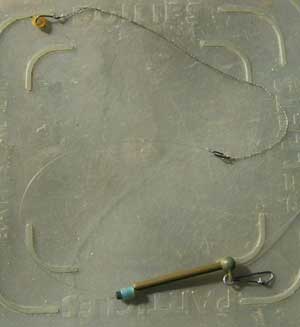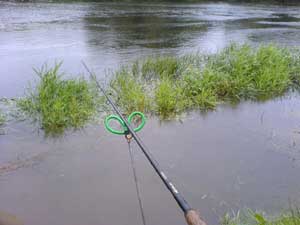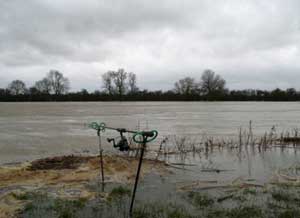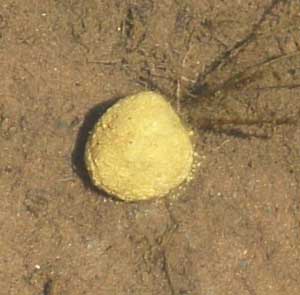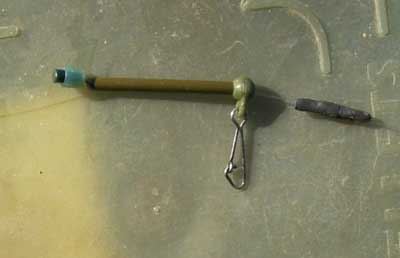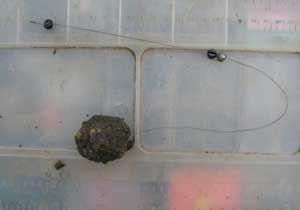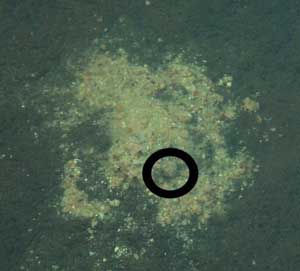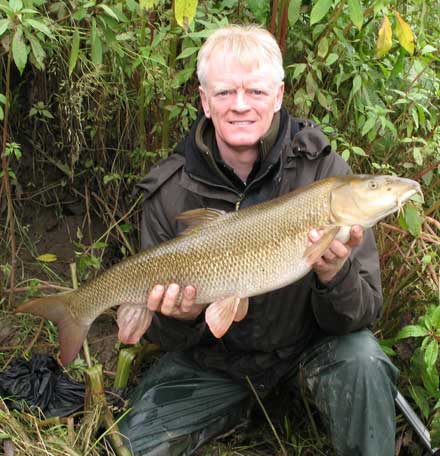| <-----'How to Catch Bigger Barbel', Page 1
Sight: fish can see a lot better than we give them credit for. Even in coloured water visibility is often better that it appears from the surface. The more visible clues to the presence of our rig, the more likely we are to spook fish. In my opinion the most obvious clue is glinting. Most of the materials that we use to make our rigs, including our reel line, have smooth shiny surfaces which can catch the light and glint. Here are some ways of reducing glinting:
The other clue is the visibility of the rig itself. In my experience the main issue is the visibility of our main line coming down through the water, but I’m also convinced that educated fish recognise feeders and leads. Here are ways to prevent fish being spooked by your rig:
Finally, educated fish may recognise the bait itself as dangerous. You need to be aware of how other anglers are fishing and be prepared to make changes. Danger signals might be:
Feel: this can be the most critical factor as barbel can’t see the bait when they are picking it up and so they locate it with their barbules and their lips. I use braid wherever possible as it is so much limper than mono. I’m convinced that braid is almost indistinguishable from weed and filamentous algae and so is less likely to spook a wary fish. The other factor to think about is a fish brushing against your line. To minimise the risk of this happening you need to ensure that your line is on the bottom above your lead and/or use a long hooklength. I’m not a fan of back leads so I keep my rod tip low, keep the tension in my line to a minimum and, if needed, use tungsten putty on a power gum stop knot to pin my main line down.
Bait and Feeding I’m not going to talk much about hook baits here because in my opinion your choice of hook bait is generally not critical. So I’m really sorry if you’ve just spent loads of money on the latest super bait…. I’d better explain hadn’t I? Most of us use a mass bait such as hemp, bird seeds or pellets as our basic fish attracting feed and present a hook bait over it. We introduce this feed via a feeder, pva bag or by just throwing or catapulting it in. We might also glug this feed with a flavour. The simple fact is that if we fish like this then what we use on the hook doesn’t really matter. The important factor is that it shouldn’t look or feel too different from the feed. A small, dark hook bait will be taken without fear if it is presented amongst small dark pellets. What might spook an educated fish is a hook bait that stands out amongst the feed either by size or by colour. Remember an educated fish will have been caught before and if everyone is using 15mm boilies over a bed of pellets then they might be wary of this method. I’ve seen big barbel treat large beds of bait with caution – not swimming over them and only feeding round the edge. I blame the angling press for the current fad of filling in a swim with bait. Remember that the guys doing the features in Angling Times or Anglers Mail are often fishing lightly fished stretches and will have introduced feed over several days. If you are fishing a short session on a heavily fished river you need very little bait – if you fill it in you’ll only ruin it for yourself and for other anglers. Small quantities of a smelly bait are the way to go if you want to catch bigger fish. The smell attracts the fish from long distances. The small quantity of feed doesn’t spook the fish and it makes your hook bait easier to find. Only introduce more feed once you have caught a fish as the swim will have been disturbed then anyway. I’ve mentioned lumpy paste before, but at close range on a low clear river nothing beats it. You make it by soaking pellets until they go mushy, drying them off with a bit of method mix and squeezing them around a pellet on the hook. Fish this on a long hooklength to fish you can see or on a known barbel route and success is guaranteed. The reason it works is that your hook is hidden amongst a pile of bait and the lumpy paste looks like a pile of discarded bait that has started to break down. Educated fish might well view a pile of fresh pellets with suspicion if they’ve been caught by people using PVA bags.
Bait and wait is a concept that was developed for long sessions on lightly fished rivers, but the method can be modified very successfully for short sessions on heavily fished waters. My 2 biggest fish so far this season at 9lb 13oz and 10lb 1oz were both caught by my version of bait and wait. There’s nothing very special about what I do, but it works really well. Let me take you through a typical 6 hour session:
So during the 6 hours I’ll have fed 9 handfulls of pellets and probably between 10 and 15 small cage feeders’ worth of soaked pellets in 3 swims. Hopefully I’ll have caught a few fish and, often, the bigger fish are caught in the second or third swim or in the second part of the first swim. Conclusion Well that was a bit of a marathon! Congratulations if you’re still with me! I’m not suggesting that you use everything I’ve suggested all the time as the aim of this article is to make you think. The key is to think about your fishing before you wet a line: have a plan, be different, stick at it. It’s the subtle difference between what you do and what everyone else does that catches you the bigger fish. At its simplest it means fishing with the rod tip low, feeding small quantities of smelly bait and using a long hooklength.
To give you one final example, here’s a true story: A few weeks ago I was just getting ready to cast out again after returning my first double of the season, when a bloke I know popped his head over the top of the bank. I told him about the double and also about the 9lb 13oz fish I’d caught the week before. He watched as I cast the feeder then he said: “Oh is that where you’re fishing? I wouldn’t have fished there in this swim.” Need I say any more? |
Welcome!Log into your account










